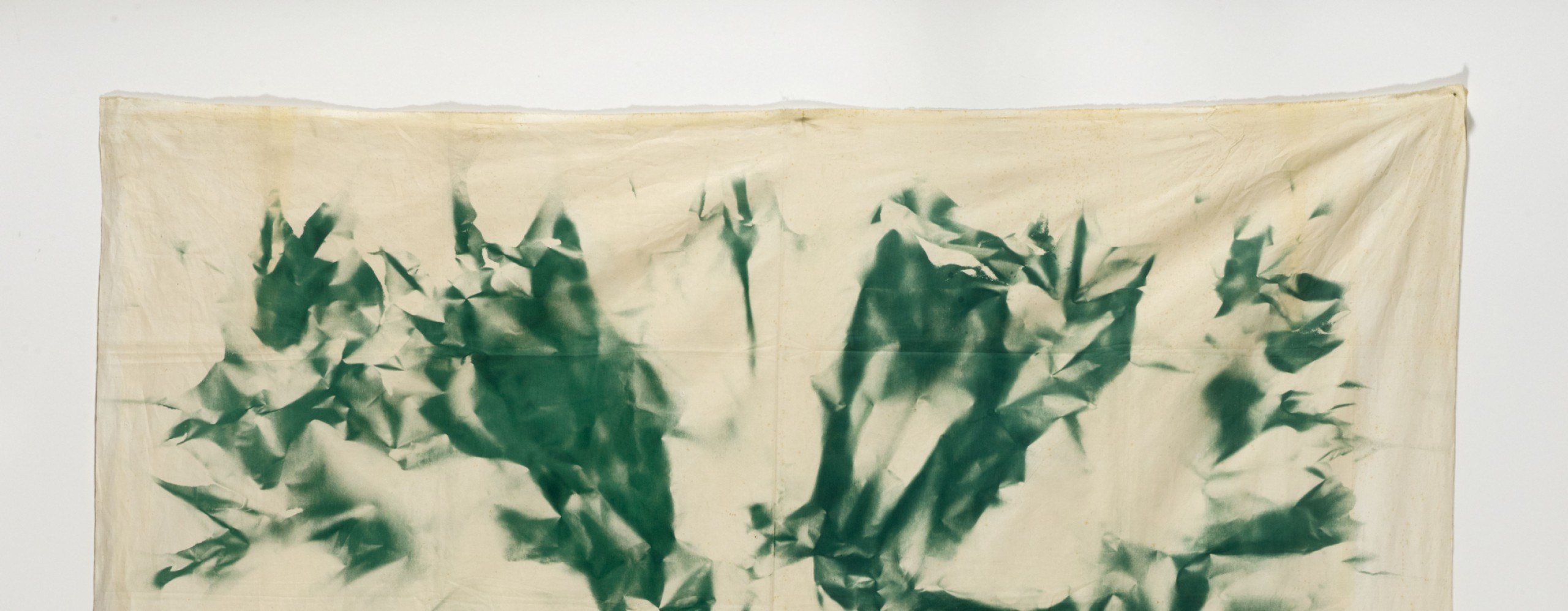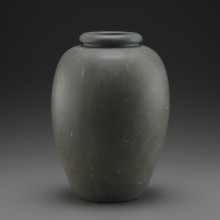
Watch and Listen
Froissage by André-Pierre Arnal
Produced in 1968, André-Pierre Arnal’s Froissage is part of the experimentation of the Supports/Surfaces group of which he was a member. Deconstructing the traditional painting was at the heart of their thinking and the artists of the group did not hesitate to fold, cut or crumple the canvas, often separated from the stretcher, in order to rethink the codes of painting.
Archive photograph, artists pictured from left to right : Claude Viallat, Daniel Dezeuze, Vincent Bioulès, Patrick Saytour, Marc Devade, André Valensi.
Peinture à la bombe sur toile libre
350 x 238.8 cm
FGA-BA-ARNAA-0005
Narrated by Lucie Pfeiffer, assistant curator Fine Arts Collection
At the turn of the 1970s, the Supports/Surfaces group explored questions relating to painting and its materiality. At that time, the deconstruction of the traditional painting was at the heart of their reflection and some artists did not hesitate to separate the canvas from the stretcher in order to fold, crumple, sew or cut it, thereby questioning the support and the surface of the painting.
With his Froissage from 1968, André-Pierre Arnal associated the production of form and colour with the materiality of the support. He crumpled the canvas and covered it in paint, allowing random forms to appear.
This technique is reminiscent of that of Simon Hantaï, whose pioneering work strongly influenced the Supports / Surfaces artists and Arnal in particular. As early as 1962, Hantaï had used the crumpling of the canvas in the Manteau de la Vierge, entrusting the result of the pictorial composition to chance.
Discover our newsletter
We just sent you a verification email. Please click the link in the email to complete the subscription process.


All rights reserved. Without authorization from ProLitteris, the reproduction and any use of the works other than individual and private consultation is prohibited.

